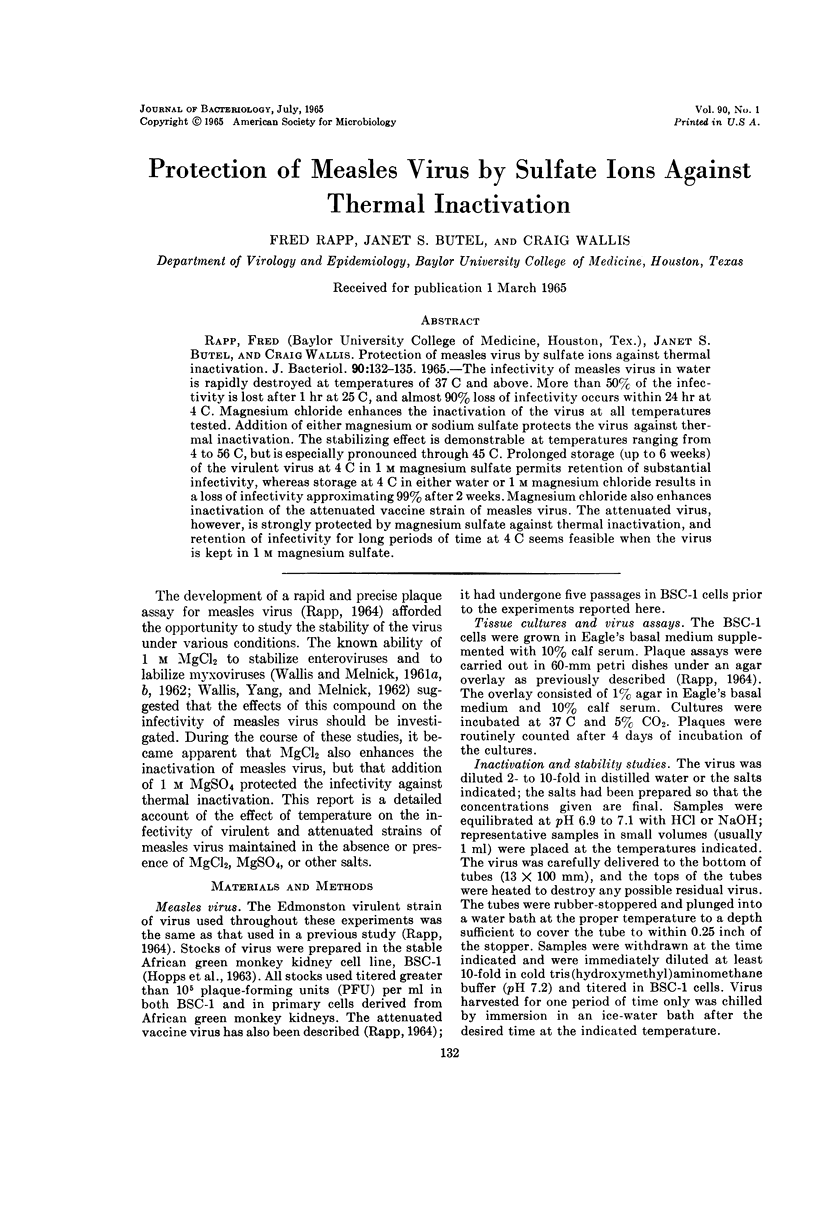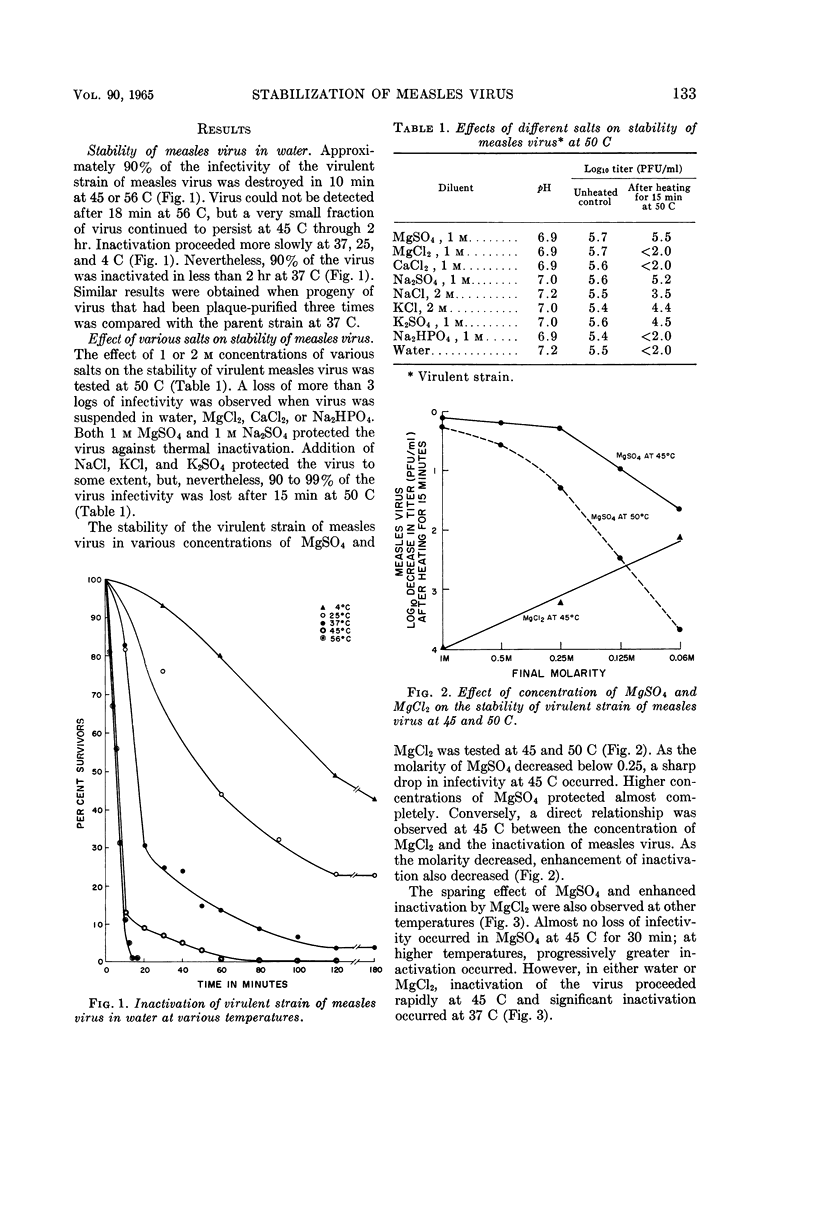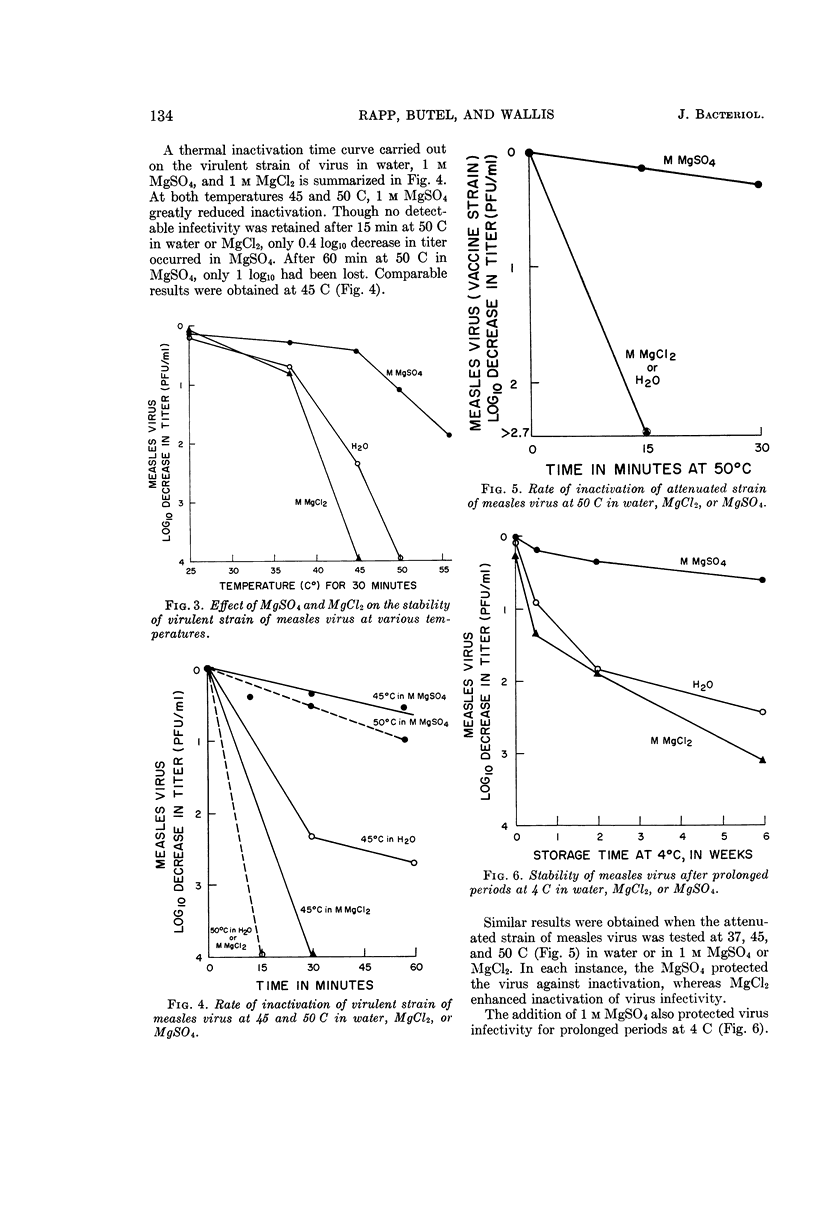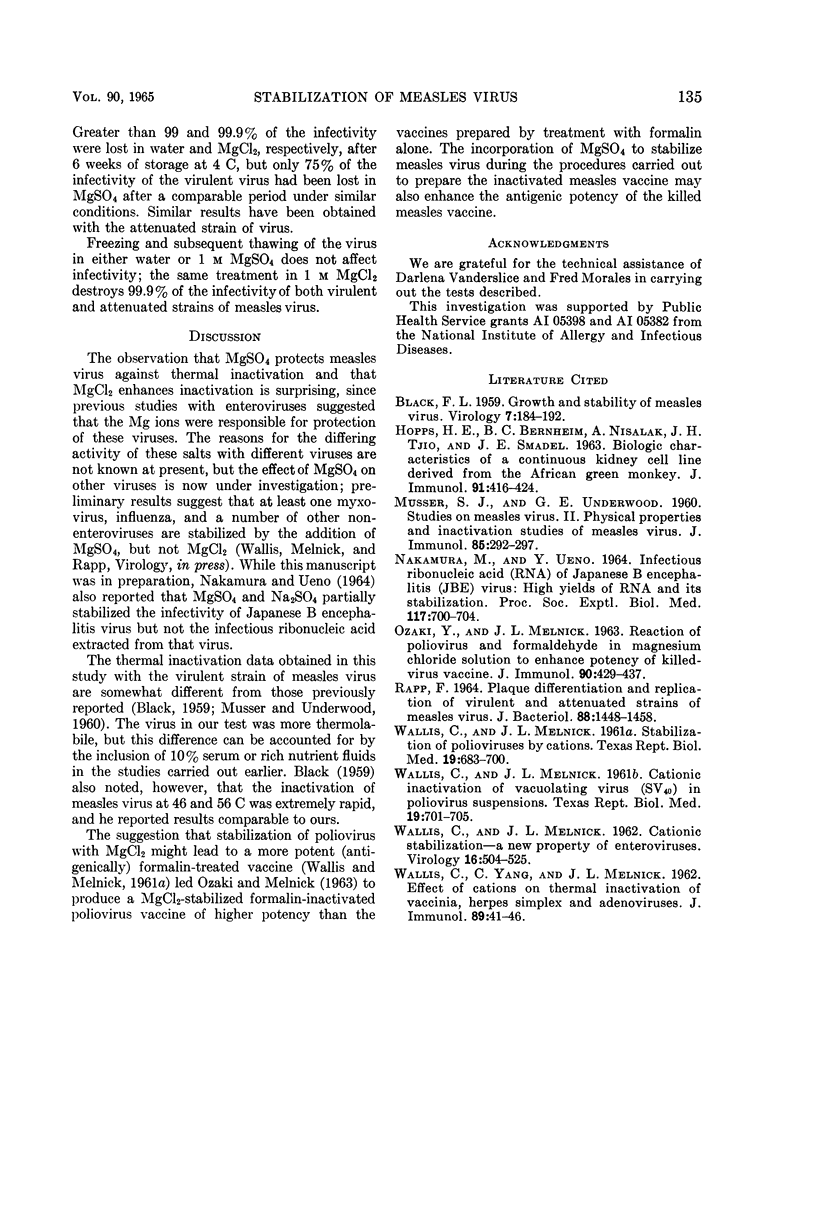Abstract
Rapp, Fred (Baylor University College of Medicine, Houston, Tex.), Janet S. Butel, and Craig Wallis. Protection of measles virus by sulfate ions against thermal inactivation. J. Bacteriol. 90:132–135. 1965.—The infectivity of measles virus in water is rapidly destroyed at temperatures of 37 C and above. More than 50% of the infectivity is lost after 1 hr at 25 C, and almost 90% loss of infectivity occurs within 24 hr at 4 C. Magnesium chloride enhances the inactivation of the virus at all temperatures tested. Addition of either magnesium or sodium sulfate protects the virus against thermal inactivation. The stabilizing effect is demonstrable at temperatures ranging from 4 to 56 C, but is especially pronounced through 45 C. Prolonged storage (up to 6 weeks) of the virulent virus at 4 C in 1 m magnesium sulfate permits retention of substantial infectivity, whereas storage at 4 C in either water or 1 m magnesium chloride results in a loss of infectivity approximating 99% after 2 weeks. Magnesium chloride also enhances inactivation of the attenuated vaccine strain of measles virus. The attenuated virus, however, is strongly protected by magnesium sulfate against thermal inactivation, and retention of infectivity for long periods of time at 4 C seems feasible when the virus is kept in 1 m magnesium sulfate.
Full text
PDF



Selected References
These references are in PubMed. This may not be the complete list of references from this article.
- BLACK F. L. Growth and stability of measles virus. Virology. 1959 Feb;7(2):184–192. doi: 10.1016/0042-6822(59)90186-2. [DOI] [PubMed] [Google Scholar]
- HOPPS H. E., BERNHEIM B. C., NISALAK A., TJIO J. H., SMADEL J. E. BIOLOGIC CHARACTERISTICS OF A CONTINUOUS KIDNEY CELL LINE DERIVED FROM THE AFRICAN GREEN MONKEY. J Immunol. 1963 Sep;91:416–424. [PubMed] [Google Scholar]
- MUSSER S. J., UNDERWOOD G. E. Studies on measles virus. II. Physical properties and inactivation studies of measles virus. J Immunol. 1960 Sep;85:292–297. [PubMed] [Google Scholar]
- NAKAMURA M., UENO Y. INFECTIOUS RIBONUCLEIC ACID (RNA) OF JAPANESE B ENCEPHALITIS (JBE) VIRUS: HIGH YIELDS OF RNA AND ITS STABILIZATION. Proc Soc Exp Biol Med. 1964 Dec;117:700–704. doi: 10.3181/00379727-117-29672. [DOI] [PubMed] [Google Scholar]
- OZAKI Y., MELNICK J. L. REACTION OF POLIOVIRUS AND FORMALDEHYDE IN MAGNESIUM CHLORIDE SOLUTION TO ENHANCE POTENCY OF KILLED-VIRUS VACCINE. J Immunol. 1963 Mar;90:429–437. [PubMed] [Google Scholar]
- RAPP F. PLAQUE DIFFERENTIATION AND REPLICATION OF VIRULENT AND ATTENUATED STRAINS OF MEASLES VIRUS. J Bacteriol. 1964 Nov;88:1448–1458. doi: 10.1128/jb.88.5.1448-1458.1964. [DOI] [PMC free article] [PubMed] [Google Scholar]
- WALLIS C., MELNICK J. L. Cationic inactivation of vacuolating virus (SV40) in poliovirus suspensions. Tex Rep Biol Med. 1961;19:701–705. [PubMed] [Google Scholar]
- WALLIS C., MELNICK J. L. Stabilization of poliovirus by cations. Tex Rep Biol Med. 1961;19:683–700. [PubMed] [Google Scholar]
- WALLIS C., MENICK J. L. Cationic stabilization--a new property of enteroviruses. Virology. 1962 Apr;16:504–506. doi: 10.1016/0042-6822(62)90234-9. [DOI] [PubMed] [Google Scholar]
- WALLIS C., YANG C. S., MELNICK J. L. Effect of cations on thermal inactivation of vaccinia, herpes simplex, and adenoviruses. J Immunol. 1962 Jul;89:41–46. [PubMed] [Google Scholar]


